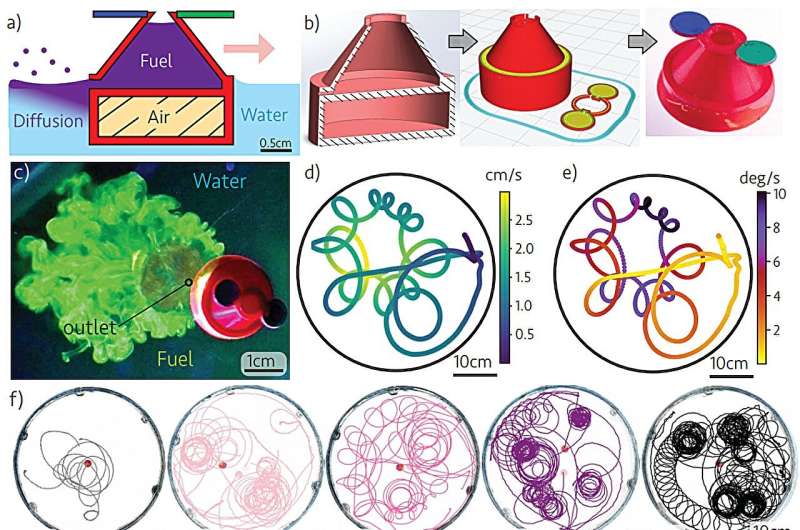
December 1, 2024 by Bob Yirka , Phys.org
Collected at: https://phys.org/news/2024-11-3d-particles-propel-surface-fluid.html
A small team of physicists at the University of Amsterdam has demonstrated the ability of 3D-printed particles to propel themselves across the surface of a fluid, given the right fuel. The group has posted a paper describing their particles on the arXiv preprint server.
Prior research has shown that droplets with a surface tension lower than the surface tension of surrounding fluid will spread rather than mixing, a phenomenon known as the Marangoni effect. A drop of alcohol in a cup of water, for example, will spread across the surface rather than mix with the water and it remains until it evaporates. In this new effort, the research team used this effect to create self-propelling particles.
The particles were 3D printed into a shape like a hockey puck—each was approximately 1 centimeter in diameter. The particles were hollow, making them buoyant. The researchers described the hollow part of the puck as a fuel tank into which they poured a small amount of alcohol. They also poked a tiny pinhole in the puck to allow the alcohol to slowly escape when it was placed in a cup of water. Due to the Marangoni effect, the alcohol tried to spread, carrying the puck along with it.
Testing showed the stronger the alcohol, the faster the particle moved—the fastest was approximately 6 centimeters per second. They also found that they could keep the particle moving for up to 500 seconds. They also propelled bigger particles in the same way and found that putting more than one particle in motion on the surface of a liquid could set in motion what they describe as the “Cheerio effect,” the phenomenon in which individual Cheerios in a bowl of milk will attach to one another and move in tandem.
The research team suggests their particles could serve as an inspiration for environmental cleanup efforts or in helping to disperse a chemical (held in a second tank) across the surface of another as a means of distributing it more evenly than could be achieved by simple mixing.
More information: Jackson K. Wilt et al, ActiveCheerios: 3D-Printed Marangoni-Driven Active Particles at an Interface, arXiv (2024). DOI: 10.48550/arxiv.2411.16011
Journal information: arXiv

Leave a Reply